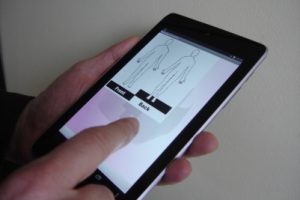
Setting the rota can be one of the most stressful and time-consuming managerial tasks, not least because ensuring a care home has adequate carers in place at all times is something that CQC inspectors will be looking at closely.
Suitable staff scheduling software can take a lot of the strain when it comes to creating a rota. Here are some of the many ways specialist solutions can help.
1. Ensuring cover is always available
One of the time-saving features of our scheduling software that customers depend on most is the ability to store employees’ regular hours on a rolling rota. There is no need to keep re-inputting data, the rota can be prepared as many weeks in advance as required and managers can see at a glance where shifts need to be filled. At the same time, staff can be confident of getting the shifts they want. When absences inevitably occur, the software can be used to find suitable cover quickly and easily, even at short notice. Employees can be filtered via criteria that determine their rate of pay, such as training, qualifications and seniority, so you can be sure of always having staffing levels that meet regulatory requirements without burning your budget.
When it comes to managing leave, easylog rota software can automatically check that the required cover is still available for a proposed period of absence.
2. Giving staff plenty of warning about their shifts
A reliable and timely method of informing staff about their shifts is essential for smooth continuity of care. By using our employee smartphone apps, shift details can be sent from the main rota software direct to carers’ phones at the touch of a button as soon as the rota is set. Your carers can confirm the shift immediately, saving time and reducing the possibility of errors as shifts will always be available to view on the phone. Staff can also use the app for other routine tasks, such as managing leave and expenses and checking clockings against shifts, making associated admin faster and more efficient.
3. Comparing clockings with shifts
An integrated clocking system makes calculating pay simpler and more accurate and, more importantly from the CQC’s point of view, allows managers to show that no periods have been left uncovered. Our software can be used with any of our attendance options, from mobile phones and iPads to biometric handscanners, fingerprint readers and facial recognition devices. We even have specialist electronic devices for monitoring night checks so you have a reliable record that routine but essential care tasks have been recorded. To find the best match for your care home, just contact one of our team.
4. Providing adequate records
A further benefit of using specialist scheduling software is that a full record of the rota is available for CQC to inspect and can be retained for the statutory period without keeping multiple paper files. As well as saving space, this means records can be searched quickly and easily and electronic reports generated as required.
5. Being able to show clients are receiving the right staff allocation
Supported living providers can prove care has been provided by allocating staff on the rota to individual or multiple service users. They can also show the local authority that the care it is paying for has been delivered through easily-generated reports and invoice clients directly from the software.
6. Using reports to improve service provision
The opportunity to produce reports is one of the key management benefits of a software-based rota. For example, shift and absence records can be used as an accurate input to staff supervisions and any problems can be pinpointed and acted upon – something that CQC inspectors like to see as evidence that fit and proper management is in place.
To find out more about our rota software and clocking options, or any other products, please request a call-back or contact us.



